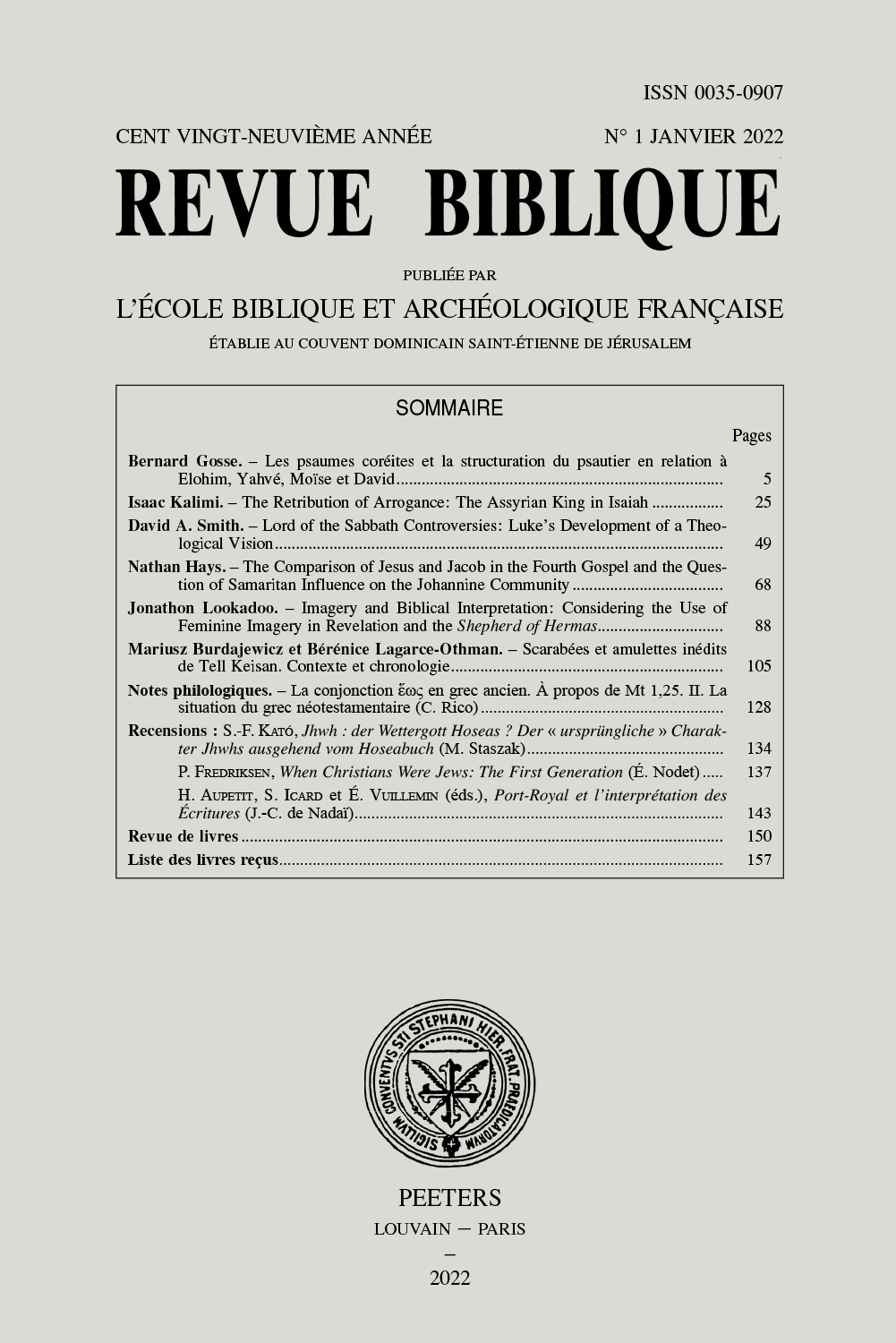next article in this issue  |

Preview first page |
Document Details : Title: Kiyyōr 'Laver' Subtitle: An Urartian Loanword in Biblical Hebrew and its Historical Implications Author(s): BLOCH, Yigal Journal: Revue Biblique Volume: 132 Issue: 2 Date: 2025 Pages: 161-183 DOI: 10.2143/RBI.132.2.3294258 Abstract : The article deals with the Biblical Hebrew term kiyyōr 'laver' – a loan from Urartian kiri 'a metal vessel, cup' via the intermediary of Akkadian kiūru. The likely date for its borrowing is the late reigns of Tiglath-pileser III and Ahaz, between 732 and 727 BCE. The article explores the implications of this historical context for the dating of the biblical sources that contain almost all the occurrences of kiyyōr – 1 Kgs 7, part of the narrative of Solomon’s Temple, and the story of the construction of the Tabernacle in the Priestly source of the Pentateuch (Exod 25-31, 35-40). Cet article traite du mot biblique hébreu kiyyōr «cuve» – un emprunt à l’urartéen kiri «un récipient en métal, une coupe» par l’intermédiaire de l’akkadien kiūru. La date probable de son emprunt est la fin des règnes de Tiglath-Phalazar III et d’Achaz, entre 732 et 727 av. n. è. L’article explore les implications de ce contexte historique pour la datation des sources bibliques qui contiennent presque toutes les occurrences de kiyyōr – 1 Rois 7, une partie du récit du Temple de Salomon, et l’histoire de la construction du Tabernacle (ou de la Demeure) dans la source sacerdotale du Pentateuque (Exode 25-31; 35-40). |
|


